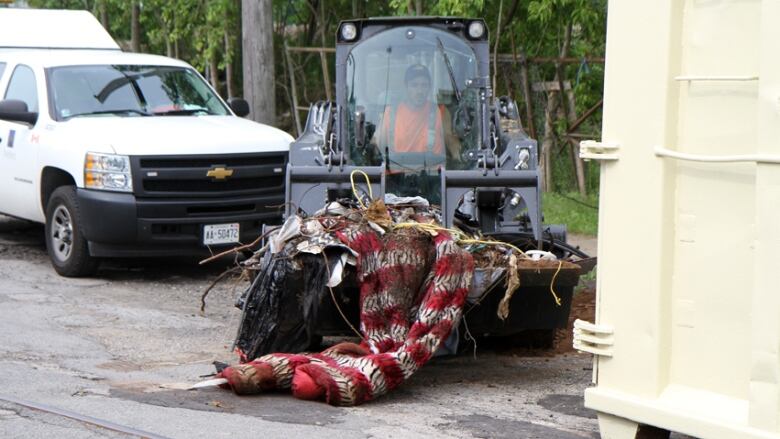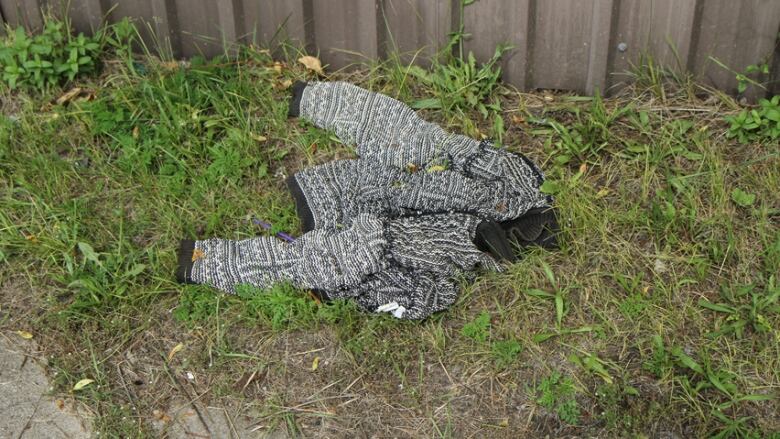People living in tents at Barton/Tiffany reflects a growing crisis: advocates

It's eviction day for the people who have been living in tents on a vacant brownfield lot near Hamilton's waterfront. And while none of them are around Wednesday morning, there are remnants of them everywhere.
An excavator carries their former belongings out to a dumpster.There are sweaters and bicycle parts. There's asuitcase, and aplastic floor fan in pieces. Dirty blankets drip from the teeth of the excavator bucket.
It's a stark image of a forced eviction from the contaminated Stuart Street land, which will one day be four-storey commercial and mixed use development. And to Hamilton, housing advocates say, it should be a wake up call to an increasing low-income housing crunch.
"Why can't we look at this crisis as a turning point?" said Renee Wetselaar, a housing advocate with the Social Planning and Research Council of Hamilton. "This is an opportunity that we need to pay attention to."

Housing is an ongoing issue for Hamilton. A 2016 study shows the number of homeless are decreasing. But the issue of where people who can't afford condos continues to pervade.
Housing prices are trending upward, while the rental market remains tight and wages stagnant. The waiting list for social housing sits at around 6,000 individuals and families, and has for years. So for some people, there's nowhere to go.
Meanwhile, the city is primed for some key waterfront development that includes the Barton-Tiffany area where this site is.A new plan for Piers 7 and 8 will add 1,500 condos. And while at least five per cent of those units will be affordable, Coun. Matthew Green says for many, that isn't really affordable at all.
The Canada Mortgage and Housing Corporation defines "affordable housing" as when someone paysless than 30 per cent of their before-tax household income on shelter.

That doesn't necessarily help people living in tents around Hamilton, he said. And there are many moreout there.
"We have situations like that along the escarpment, along the railroad tracks,around industrial andabandoned addresses," he said. "We're in a housing crisis."
Green says thecity can't expect the private sector to solve the crisis anyway.
The city is studying new inclusionary zoning rules that would dictate that a certain percentage of new units are affordable. But he says it's not enough to reach the tent inhabitants at the lot bordered by Stuart, Caroline, Hess and Barton streets.
"What we need is a national housing strategy for people with deep affordability issues," he said.
The city had to remove the men Wednesday, city spokesperson Ann Lamanes said because it's doing the first phase of anenvironmental study to remediate the land. The second phase begins later this year.
"It just isn't a safe location for people to be living with the (environmental study) underway."

The Hamilton Spectator interviewed one of the inhabitants this week. He was packing his belongings into a recycling container as he tried to ship out. He said about three people lived there.
He told the newspaper theapartments he'd had were infested with vermin, and staying in shelters wasn't a long-term solution.
"I mean you tell me, where am I to go?" he said.
Wetselaar says this situation won't be the last.
"As gentrification really pushes people out to the edges, we're seeing the kinds of conditions we're used to seeing in other parts of the world," she said.












_(720p).jpg)


 OFFICIAL HD MUSIC VIDEO.jpg)
.jpg)



























































































